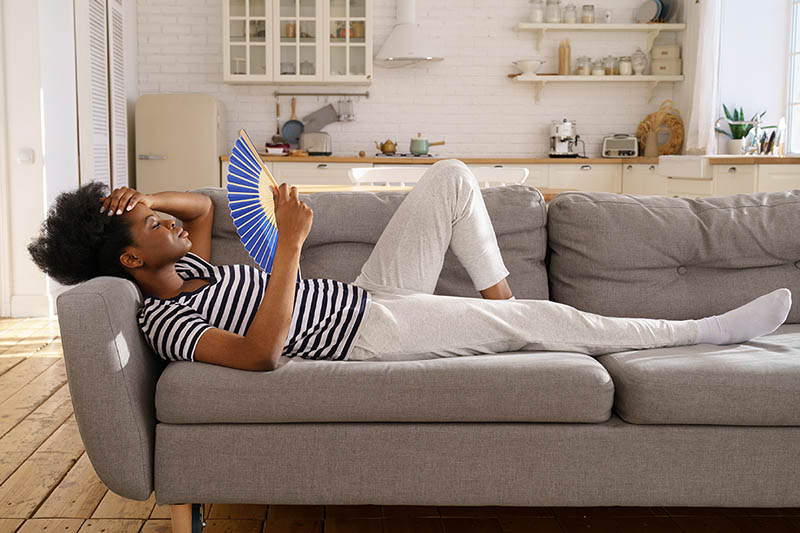6 Ways to Cool Down Your Home Without Using the AC
Keep your home cool this summer with these simple tips.

Keeping your home nice and cool not only keeps you comfortable but also provides health benefits like boosting memory, alleviating respiratory issues, and helping you get a better night’s rest.
Escaping inside to cool down can be what the doctor ordered when the heat outside is a bit too much. While natural light can be a mood booster, when the sun is beating down, your home can quickly become just as hot and miserable as the outside. However, turning on the AC can become a costly venture.
Related: Here’s How to Avoid and Treat Heat Illnesses this Summer
Here are six ways you can cool down your home without running the air conditioner and increasing your electric bill:
Close the blinds or use blackout curtains
Your home and standard windows absorb about three-quarters of the sun’s heat. And while natural light can brighten up a room, it can also quickly heat up the space.
By drawing the curtains, you reduce the amount of heat that gets into your home and keep your room cool. Blackout curtains are a good choice as they are able to block the light and the heat from entering the room thanks to their intricate fabric and design.
Seal up door and window frames
Air can easily escape and enter a home through small cracks along door and window frames that lack the proper weatherstripping or caulking. This can not only cause your home to overheat but can make a dent in your wallet.
You can rely on an expert to come and fix any issues, or you can tackle it DIY (Do-It-Yourself) style by referencing these calking and weatherstripping guides. Start either of these projects by conducting a home check for air leaks and then assess your ventilation needs.
Turn on ceiling fans
Ceiling fans are a great alternative to running the AC—if they are set up correctly. For cooler air, the fan should rotate counter-clockwise. The counter-clockwise motion pushes air down, creating a nice breezy effect. If you stand under your fan and notice the fan is moving clockwise, it is creating warm air and you’ll need to reset it.
Take a look at the fan’s base to locate the switch. The switch may be horizontal or vertical depending on the model. Simply move the switch to the other side and start enjoying the refreshing airflow.
Limit the use of large appliances
Just as light bulbs emit heat when on, large appliances like the washer and oven use a lot of energy and release heat. To keep your home cooler, avoid using these appliances during peak times in the day when the sun is out.
For example, the dishwasher relies on hot water to clean the dishes and then hot air to dry them. Visible steam is released, which you can see, but there is invisible steam from vaporized water that fills the room and can increase the room temperature. Opt to hand wash dirty dishes as opposed to running the dishwater.
Invest in a dehumidifier
Dehumidifiers are great tools to help those with asthma and allergies because they help reduce irritants in the air. Unlike humidifiers that add moisture to a space, dehumidifiers reduce the humidity in a room.
If you live in an area that has high humidity levels, dehumidifiers can cool down a space by removing the moisture from the air while alleviating any asthma- or allergy-related breathing issues.
Bring in some indoor plants
Indoor plants like ficuses and palms release water into the air through transpiration. The moisture that circulates in the air creates a refreshing feeling that is a must-have during hot summer days.
As a bonus, these plants are easier to manage and provide additional health benefits like reducing stress, increasing focus, and helping you breathe better with improved air quality.
Related: Why It’s Good for You to Exercise Outdoors

